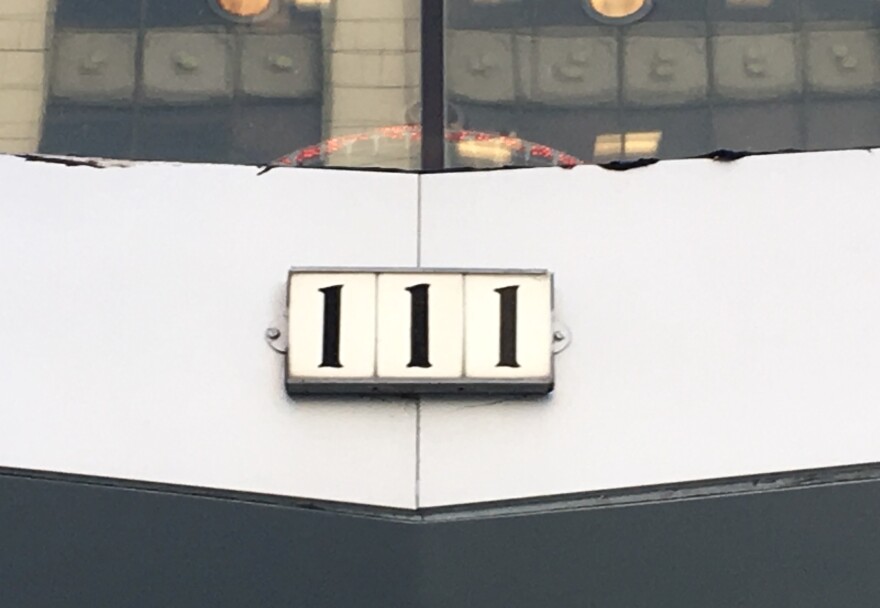If you’ve ever walked around the city, you might have noticed the distinctive tiles adorning some of the older homes in town. They’re small, white ceramic with a black font, and they’re fairly standard.
Listener Dan Osterud wrote to Bubbler Talk to ask about how these numbers came to be.
He wondered: Why are all the house numbers in the city of Milwaukee the same, all one style of ceramic tile? Was this type of number required by law?
Like Osterud, local writer Matthew Prigge was curious about the history of the city's iconic house numbers, so he decided to investigate.
"I'd been for years just noticing the address tiles. Every building I lived in had them, they were all over the place and after a few years of kind of casually noticing them, I decided to actually look into this and see what the story was," he says.
His recent article A Font for Us is featured in this month's Milwaukee Magazine and explains why these number tiles became a Milwaukee fixture.
"They looked at them from different angles, they put different lights on them to see how visible they were, they boiled the tiles, they froze them over night. They dropped steel balls on them just to make sure they could withstand the rigors of summer in the city."
"The address tiles actually came from this drive to standardize the city's house numbering system, which by the teens was becoming something of a problem," Prigge explains. "Before that, the house numbering, the street names, had been kind of done haphazardly as the city grew. So there was no real system or rhyme or reason to it."
In some cases there were multiple homes with the same address, the numbers didn't go in order, and mailmen were having a difficult time navigating the city's disorganized system. Part of the change would require residents to physically renumber their homes. Although there was never a mandate requiring anyone to use the numbers, they were distributed by the city as a way of encouraging residents to adhere to the new numbering system.
But although the problem was identified in the teens, it would be more than 15 years until the issue was fully addressed, due to bureaucratic bickering. When the Common Council finally decided how to reorganize the city's streets, they began the process of picking out the numbers, where they put the potential options through a litany of tests.

"They actually took this address tile thing very seriously," says Prigge. "They tested a number of the samples, the tiles, that they were considering. They looked at them from different angles, they put different lights on them to see how visible they were, they boiled the tiles, they froze them over night. They dropped steel balls on them just to make sure they could withstand the rigors of summer in the city, and I guess hail, I suppose? They really made sure they got what they wanted."
Although the city has stopped distributing the numbers, many Milwaukee homes continue to use them. In fact, Prigge says they became so popular they inspired knockoff replications which could be purchased at hardware stores throughout the area.
Have a question you'd like WUWM to answer? Submit your query below.
_







